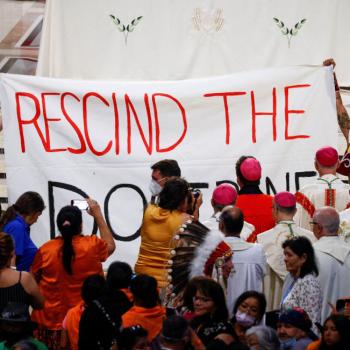
An article called “Cheating Death” appeared in Commonweal earlier this year. It made me think about an online argument I had about extinction. The article was about the morality of anti-aging research. Some of its arguments are the same as my earlier arguments. Essentially, whether your concern is personal death or species extinction, common sense and morality impose limits on what you should do about it.
Anti-aging research
The article, by Mary McDonough, examines and finds wanting proposals from some Silicon Valley types and others. They want to extend the human lifespan by hundreds of years and are ready to spend billions on the project. McDonough notes that this research does not aim at tragic kinds of death, death from childhood leukemia, say, or diseases that primarily affect the poor. Here are some of McDonough’s criticisms:
- Proponents of this research are not asking what the consequences of success would be. While presumably benefiting some individuals, would it benefit the community?
- Extending human lifespan by 50 or 100 years would speed up population growth, already projected to reach 11 billion by 2100. That would negatively impact global warming, resource use, food and water availability, and pollution. All of these already challenge the carrying capacity of the planet.
- Who would have access to life-extending technology? Presumably it wouldn’t be free. Hence, it would only worsen the gap between rich and poor.
Extinction of the human race
A couple years ago I learned that there are people seriously considering what to do about certain extinction scenarios. It’s possible to imagine ways that the human race could become extinct. The big question was, To avoid the admittedly slim possibility of extinction, should we start planning for an evacuation to another planet?
There are three extinction scenarios. Maybe more, but these three will suffice. The most inevitable is also the most distant and probably not one that people worry about yet. The sun will reach the last stages of its life in a few billion years. It will expand as a red giant to about the size of Venus’s orbit and scorch everything on earth. Then it will contract to a white dwarf and leave whoever survives in the cold. We have enough time to put that worry off for a while. Perhaps forever, since, as Christians, we look forward to an event of even greater significance – the Second Coming.
The scenario that my online antagonist worried about is a repeat of what happened to the dinosaurs 65 million years ago. Then an asteroid estimated at 3 to 10 miles across, landed offshore near Mexico’s Yucatan Peninsula. It threw up enough dust to block sunlight, chilling the whole planet for years.
Spaceguard Survey is a program that tracks near-earth-orbiting space objects. One named Apophis, about 270 meters across, is scheduled to pass very near Earth, closer than some communications satellites, in 2029. It’s going to miss us, and any collision with a really big object, miles across is extremely unlikely. But, say the worriers, when you’re talking about extinction, even a small possibility is something to prepare for. Some say that preparation should include a crash program to design spaceships that can transport a remnant of people across the galaxy to potentially inhabitable planets around other stars.
Save the race?
I have to admit there is a moral impulse behind this proposal. It’s not about saving oneself. Your chances of being on one of those ships are slim. Out of billions maybe a hundred thousand are chosen. If the goal is to have a sufficiently broad gene pool to continue the human race somewhere in the universe, a few thousand might suffice. Evolutionary science says that’s about the size of our original gene pool.
I wonder, though, how this moral impulse can sit beside the callousness of contemplating the fate of those left behind. The first Star Wars movie has an amazing line. The Death Star has destroyed Alderan, Princess Leia’s home planet. Luckily for her she wasn’t on the planet at the time. A galaxy official meets Leia later and says, “Thank goodness, you’re alive. We heard about Alderan and we feared the worst.” It seems to me the worst had happened.
The survival of a few thousand humans does not make up for the death of billions. It’s a bad story whether the human race survives or not. The California condor was near extinction and now, with concerted effort by conservationists, is making a comeback. That’s a success story. With people it’s not just a successful conclusion that counts but every life along the way.
The crash program we need
In McDonough’s answer to the ones who want to cheat death by extending the human lifespan, what struck me most was when she mentioned tragic deaths. Not death after a long full life, but deaths that shouldn’t happen. People die from hunger, pollution, inadequate health care, human-caused climate change, violence, the disease that isn’t curable yet. These deaths deserve their crash programs. The earth, our home, deserves its own crash program.
The way to make the human story a good one isn’t to guarantee survival in the end. Speaking purely scientifically, there is no survival in the end, anyway. The universe is not eternal. What we can do to make our story a good one is to meet the demands of loving our neighbor, lifting up the poor, caring for the Earth.
As I write, I’m thinking about the coming Feast of Christ the King and the end of the Church’s liturgical year. We’re nearing the end of the way the Church tells our story. If there’s a guarantee that the story is a good one, it’s that is that we live in the Kingdom of God.
Image credit: Daily Express via Google Images











